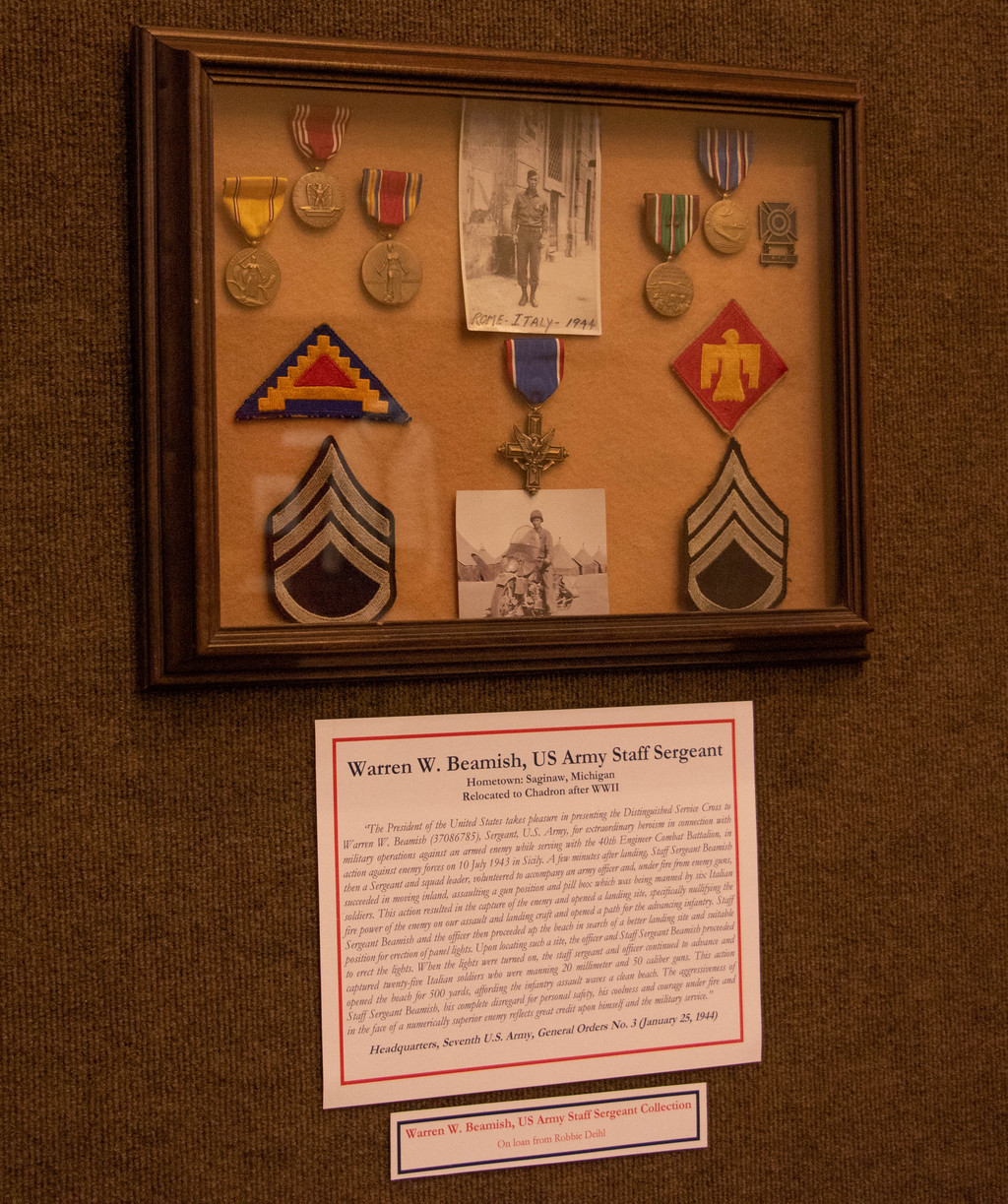Sandoz Center hosts WWII exhibit

CHADRON – “Soldiering Into Victory,” a display in the Mari Sandoz High Plains Heritage Center, commemorating the 75 anniversary of the end of WWII is now open. The Sandoz Center is an official stop on the 2020 Nebraska Tourism Passport program. Visitors can participate with a smart device app or paper booklets available at the front desk. The Sandoz Center is open Monday through Thursday from 10 a.m. to noon and 1-4 p.m. and Friday from 10 a.m. to noon.
Memorabilia on loan from local residents includes war bonds posters, pennants, flags, ribbons, medals, ration books, and guides to using rationing coupons.
CSC Security Supervisor Mark Hunt contributed a large number of items to the exhibit. His friends and fellow collectors Tony Bestwick of York, Nebraska, and Roger Coleman of Lincoln, Nebraska, also loaned many items.
“These are all original WWII period pieces. This is an opportunity for people to come in and learn a little bit about history as well as Nebraska’s role in that major event,” Hunt said.
The Medal of Honor, Purple Heart and lesser known awards and decorations are displayed in a glass case in the lobby. Several dozen hand painted sweetheart pillow cases on loan from Bestwick and Coleman are also part of the exhibit.
Holly Counts, who works at the Sandoz Center, said visitors to the exhibit should view an oversized Nebraska map with symbols representing the location of Prisoner of War camps, aviation facilities, ammunition depots, and the K9 training unit at Fort Robinson near Crawford. Counts said about half of the guard dogs used in WWII were trained at Fort Robinson.
Nebraska was an ideal location for POW camps because the prisoners could not easily escape to a coast, Counts said. They were given the option to work on local farms and ranches with earnings from their labor sent home to their family members in Germany or Italy, according to Counts.
While preparing for the show, Counts and Hunt became aware of items belonging to Robbie Diehl, CSC’s maintenance manager. Diehl’s late grandfather, Warren Beamish, earned the Distinguished Service Cross for heroic actions in the face of armed enemy forces July 10, 1943, in Sicily.
“My grandfather never talked about his days in the service. I didn’t even know about all the medals until he had already passed away, my grandmother has also passed away, and I came across a box while cleaning out their home,” Diehl said.
Hunt conducted research into the award and Counts created a shadow box featuring Beamish’s medals for the exhibit. The Distinguished Service Cross is the United States Army's second highest military award for extreme gallantry and just more than 5,000 were awarded during WWII.
A letter from the Seventh U.S. Army Headquarters, dated Jan. 25, 1944, states: “The aggressiveness of Staff Sergeant Beamish, his complete disregard for personal safety, his coolness and courage under fire and in the face of a numerically superior enemy reflects great credit upon himself and the military service.”
Chadron State College’s ties to WWII are well documented in articles by Con Marshall. The Civilian Pilot Training on campus contributed to the war effort and is credited with keeping the college open when enrollment dipped below 100. During that time, nearly all male students were drafted or had volunteered for the military and many of the female students joined the nation’s work force.
From 1939 to 1940, Chadron State was part of a national program through the Civilian Aeronautics Authority to train 11,000 civilians as pilots. After Pearl Harbor was bombed and the nation was thrust into World War II, the program took on new meaning and a new name. A Naval Aviation Training Program was established on campus in July 1942, according to Marshall. The program and others located at colleges ended in 1944 when the Navy built larger facilities to train pilots.
“Soldiering Into Victory” is open until Sept. 25.
Category: Campus News, Sandoz Society

